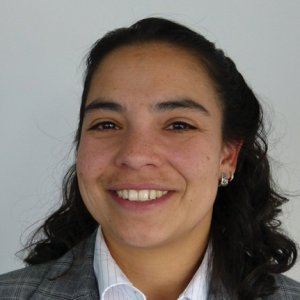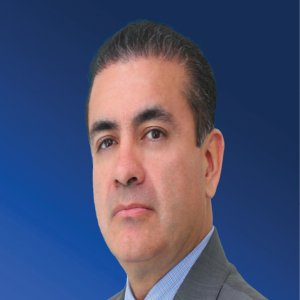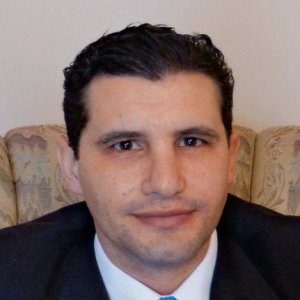Diversifying Exploration Prospects for the Future

STORY INLINE POST
Q: How have you simultaneously optimized exploration results while minimizing cost?
A: Our exploration strategy for the last couple of years has allowed us to address those issues. One of the main pillars of this strategy is to work with service companies through multiannual contracts. This allows us to have agile and constant access to crucial exploration services, which include seismic data acquisition and processing, and access to specialized exploration and drilling equipment. These multiannual contracts vary according to the service in question, but they help us to optimize our results while minimizing our costs, netting up to 40% savings.
Our main exploration priority continues to be the search for oil in the Southeast Basins. Geologically, we see these basins as having both onshore and offshore potential, although the offshore work has been partially hampered by our lack of sufficient drilling rigs to execute our complete program in previous years. We are also focusing on extending and building upon our deepwater success in different areas and regions. One of our most important priorities is to enhance the reserves replacement rates for both oil and gas. A good example of this would be the gas region off the coast of Coatzacoalcos and Alvarado, known geologically as the Catemaco Fold Belt. We have found more than 5tcf of gas in 3P reserves in this region. Yet, the amount of prospective resources in this area is estimated to be closer to 15tcf, a potential that would be extremely beneficial for the industry and needs to be further defined. One aspect of our work that is becoming ever more important is our ability to turn prospective resources into reserves. Our extensive work in Lakach is evidence of this, as there have been two additional discoveries in the area. We will continue to evaluate the area’s potential in 2014, particularly by drilling the Yoka-1 and Nat-1 wells in large structures to the northeast of the discoveries. Many argue that prioritizing gas exploration could be risky, since natural gas is cheap due to the North American shale gas boom. However, gas represents a very important strategic resource for Mexico, and its constant supply is crucial for the entire industrial sector. For this reason, gas exploration continues to be an important internal priority. We must make sure that gas can always be supplied to those sectors that need it, and exploration is key to assuring that essential supply.
Our deepwater priority continues to be finding light oil in the northern part of the Perdido Fold Belt, where we are currently delineating the Trion field. We have also drilled a couple of new wells; PEP-1 was not productive but Maximino-1 proved to be quite a discovery. We believe Maximino-1 is a historical first for Mexico, and perhaps for the world, as we found flowing oil in a water depth of 2,919m. Production testing showed very positive results, and we already have two semisubmersibles working in the area. We have also drilled the Vespa-1 well in the Mini-Basins region in the western part of the Perdido Fold Belt. Again, the results were promising, with oil found in the 24-25° API range.
Q: The 1P reserves replacement rate from new discoveries reached a historic low in 2013. Could you explain this?
A: This particular statistical anomaly is due to a series of confusions with CNH. From its point of view, exploration activity is not adding enough 1P reserves, but it does not take total reserves into consideration. It is very important to clarify that the main role of exploration is to know where to drill a well. That already poses a challenge. Our main function is to determine the probability of success and the size of the reservoir so that operational decisions can be taken effectively. We define the probability of success through indirect methods. It could be said that making a discovery is our priority and the reserves are initially labeled as possible reserves (3P). This is particularly the case for deepwater discoveries. Subsequent reservoir characterization studies, as well as appraisal and delineation wells, reduce the uncertainty about the size of reservoirs and recoverable volumes, allowing the design and sanctioning of a development project. This is where the concepts of probable (2P) and proven reserves (1P) come into play.
In the case of onshore exploration work, drilling and production infrastructure is accessible, so turning possible reserves into probable and proven reserves is easier. For deepwater, an average of eight to ten years is needed before reserves can be labeled as proven, once all of main exploration and appraisal work is done. We currently have a very strong focus on deepwater exploration, so obviously, our 1P reserve replacement rates take a downward turn due to the very nature of the work needed to make those reserves reach proven status.
Q: What have been your main achievements in terms of moving reserves from 3P to 1P status?
A: I can sum up our success through very specific projects. This year, we finished our work in the Piklis-1DL well, successfully moving reserves from possible to probable status. We are also in the process of finishing Tekel-1DL where we have made a significant move from possible to probable and proven reserves in shallow waters. Another delineation well we are completing this year is Trion-1DL, where we are hoping to move substantial reserves from possible to probable. These projects are having the greatest impact at a national level. A 40-50% exploration success rate would have been good according to international standards, but the 60% success rate we achieved in 2013 is exceptional. The discoveries in Maximino and Vespa, which opened up the Mini-Basins area for us, were important to achieve this success rate. The aforementioned successes in Piklis and Tekel also helped in putting together such good numbers.
Q: What would you describe as the main exploration technologies you are currently focusing on?
A: There are no silver bullets in terms of exploration technologies; there is no single magical technology that will solve all of our problems. We are seeing an evolution in the applications of exploration technologies that are being introduced to Mexico. For example, the 3D seismic and wide-azimuth methods allow us to shed light on what is hidden under salt bodies. Using this technology, which requires high processing power, we managed to identify Trion and Vespa through a salt window.
We are also working on reverse time migration (RTM) technology, which will help us map reservoirs under thick salt bodies and geologically complex areas. PEMEX has been able to secure access to companies that are leaders in their respective technological fields, signing service contracts with the four industry leaders. Furthermore, we are developing the application of electromagnetic exploration methods to get more information from the subsurface. This technique consists in sending electromagnetic pulses with different frequencies to measure the subsurface response based on the resistivity contrasts. These measurements, combined with all the geological and geophysical knowledge, help us reduce uncertainty and risk about the presence of hydrocarbon accumulations to better rank our prospects. Quantitative interpretation, which is combining seismic acquisition, seismic processing, electromagnetic methods, and other technologies, with our geological knowledge, has allowed us to increase exploration and commercial success.
Q: What are your main exploration priorities for the coming years?
A: Of our overall budget, approximately 50% goes to deepwater, 40% goes to the Southeast Basins for onshore and offshore exploration, and the remaining 10% goes to exploration in the major gas basins, especially those in Burgos and Veracruz.
The Southeast Basin is where we expect future oil to be in the short to mid-term. For years we have had to deal with a marked lack of jack-up rigs that we need in the offshore part of the Southeastern Basins. Thankfully, we have been able to solve this problem during 2013. We are expecting to operate eight jack-ups and one semisubmersible in order to correctly execute our offshore work in the Southeast Basins.
Deepwater, on the other hand, is where future oil will be in the long-term. We are also confident that we can consolidate our knowledge of the Catemaco Fold Belt gas region. We are also expecting exploration success in both deepwater and shallow water areas of the Salina del Istmo province. We will continue exploring the southern region of the Perdido area, including the subsalt area, as well as confirm our expectations in the Mini-Basins. If this potential is confirmed, the Mini-Basins could be comparable in size to Southeast Basins, although not as big as Cantarell or KMZ.
We also have an investment project ready for shale oil and gas exploration, about which not much has been revealed. Shale oil and gas exploration is at a very early stage, but we must understand that shale is at the level where deepwater was five to seven years ago. It started small, just like shale exploration started now, but we can now confirm the continuity of US shale plays into Mexico and a huge gas province in the south. Shale exploration needs to focus on defining whether we are talking about shale gas or oil. We need more exploration to determine Mexico’s true shale potential, and in order to accelerate that certainty, we need more money. The budget for exploration needs to go up or we need to look for mechanisms that allow us to find the financial resources elsewhere. We need to drill 175 exploratory wells across the prospective regions, purely to characterize the types of hydrocarbons. The date when we will be ready for mass drilling will depend on the identification of sweet spots, the level of investment, and the amount of people we can get involved.




















